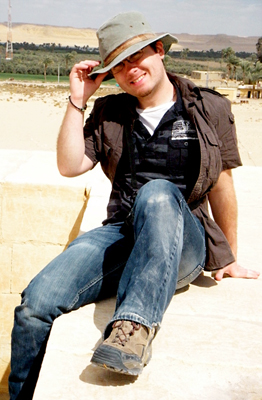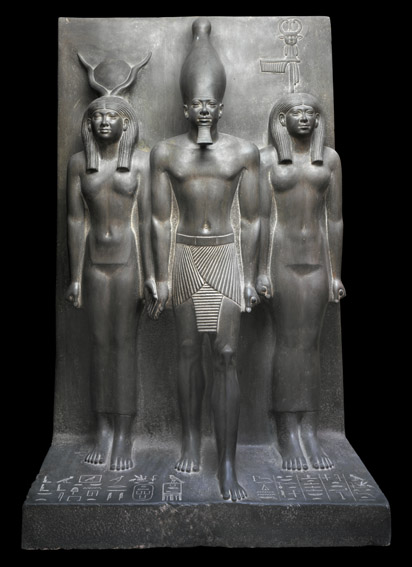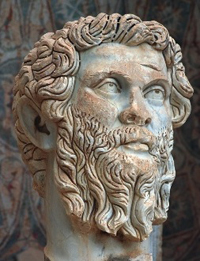Live Interpretation Manager of Historic Royal Palaces and King Arthur Expert Christopher Gidlow is the Live Interpretation Manager of Historic Royal Palaces. He specialises in bringing history to life at the Tower of London, Hampton Court Palace, Kensington Palace and the Banqueting House Whitehall. He is also responsible for interpretation on the project to open the Georgian Kitchens of Kew Palace to the public. He is also a director of the International Museum Theatre Alliance (Europe). A life-long enthusiast for the Arthurian legends, Christopher describes being told by his primary teacher that they might have a basis in fact as…
-
-
Egyptologist 11 November 1942 Dr Rolf Krauss is a renowned German Egyptologist who – prior to retiring in 2007 – last worked as a researcher at the Berlin Museum of Prehistory and Early History, and as a lecturer at Humboldt University. He has produced a number of important studies into ancient Egyptian chronology and astronomy. Born in Heidelberg in 1942, Dr Krauss studied at the University of Heidelberg and the Free University of Berlin from 1975 to 1981, gaining his PhD in Egyptology from the latter institution. He went on to work at the Egyptian Museum in the National Museums…
-
Attribution: Photo by Maggie Bryson Garry Shaw Egyptologist and writer 7 April 1981 Dr. Shaw studied archaeology at the University of Liverpool from 1999 – 2002, and then stayed on in Liverpool to study for an MA (2002 – 2003) and PhD (2004 – 2008) in Egyptology, only taking a year off to go explore China. His main area of research has been elite life and architecture in Egypt’s New Kingdom, with the extent of the pharaoh’s personal authority in day-to-day political affairs being the subject of his first book, published in 2008. Subsequently he has written academic articles on…
-
Attribution: Heritage Key Cairo Egypt Key Dates This item is dated from the 4th Dynasty of the Old Kingdom. Key People The triad depicts King Menkaure, the last Great Pyramid builder. The 17th Nome of Upper Egypt and the goddess Hathor are pictured to the left and the right of Menkaure respectively. In the Triad of Menkaure, King Menkaure is depicted in the foreground wearing the white crown of Upper Egypt. Hathor, the goddess of music and love, is shown to the right of Menkaure, holding his hand. To the left of Menkaure is the 17th Nome of Upper Egypt.…
-
What lies behind the legends of King Arthur? Fragments of history, or just wishful thinking? While historians study the ancient manuscripts, modern archaeologists join in the hunt for clues. From Arthur’s ‘birthplace’ at Tintagel to the fabled ‘Isle of Avalon’, we sift through the evidence. Journeying across Arthur’s Britain, we search for Camelot and the sites of his battles. Do the remains confirm or contradict the traditional accounts? Far from providing objective proof, Christopher Gidlow shows how archaeologists’ interpretation of their discoveries reflects the academic fashions of their times. Sites which in the 1960s were used to prove King Arthur’s…
-
Attribution: Taken from the ‘One & Other’ live video stream. mike pitts Archaeologist and editor of British Archaeology magazine Mike Pitts is an influential freelance archaeologist and writer who edits British Archaeology magazine (since 2003). He has also written trade books such as Fairweather Eden and Hengeworld, and has produced features for BBC History, New Scientist and American Archaeology. A novel and a non-fiction book are also in the pipeline, and Mike has also waded into the world of radio broadcasting with a historical drama for BBC Radio 4. Mike claims his love for archaeology grew from his first observation of…
-
The techniques and materials used to make cave paintings and other forms of rock art are almost as diverse as the people who created them. What unites these ancient artists – across almost all of the earth’s continents and over tens of thousands of years of ancient history – is their increasing level of incredible ingenuity. Handy Work The phrase ‘cave paintings’ somewhat obscures the vast range of methods used to create works of non-portable art on rocks and cave walls. They could be painted, but they could also be drawn, daubed, scratched, chipped, sculpted in relief, engraved, stenciled or…
-
People of the Earth An Introduction to World Prehistory by Brian Fagan The 13th edition of this internationally renowned text provides the only truly global account of human prehistory from the earliest times. Written in an accessible way, People of the Earth shows how today’s diverse humanity developed biologically and culturally over millions of years against a background of constant climatic change. Brian Fagan is one of the leading archaeological writers in the world and an internationally recognised authority on world prehistory. He studied archaeology and anthropology at Pembroke College, Cambridge University, and then spent seven years in sub-Saharan Africa working in…
-
Key Dates Tikal was at its height between 200 and 900 AD Tikal Guatemala Tikal, in the jungles of Guatemala is one of the largest archaeological sites and urban centres of the pre-columbian Mayan civilization and was at its height between 200 and 900 AD. The park contains 222 square miles of jungle, and the residential area of Tikal itself covers 23 square miles encompassing 1000s of structures of which very few have been excavated. The University of Pennsylvania took 13 years to uncover 10 square miles of architectural remains, so there are most likely a number of structures in…
-
Ethel Davies, author of Bradt‘s North Africa: The Roman Coast, has travelled the region extensively. It’s a fascinating area, full of well-preserved Roman ruins, as Ethel enthused in her interview with Heritage Key. The Romans signalled their arrival and dominance in North Africa with the destruction of Carthage in 146 BC. By the third century AD, there were as many as 600 Roman cities at the northern end of the African continent. Prior to this expansion of the Roman empire, the northern coast had been home to Phoenician, Punic and Greek settlers and traders. Here, she gives us her top…






